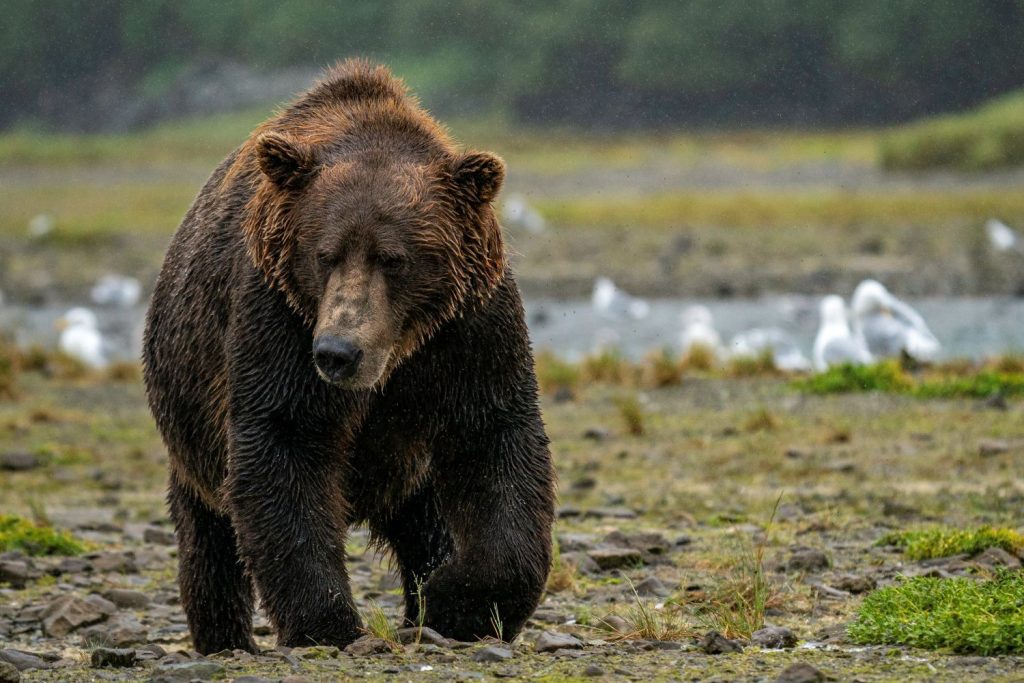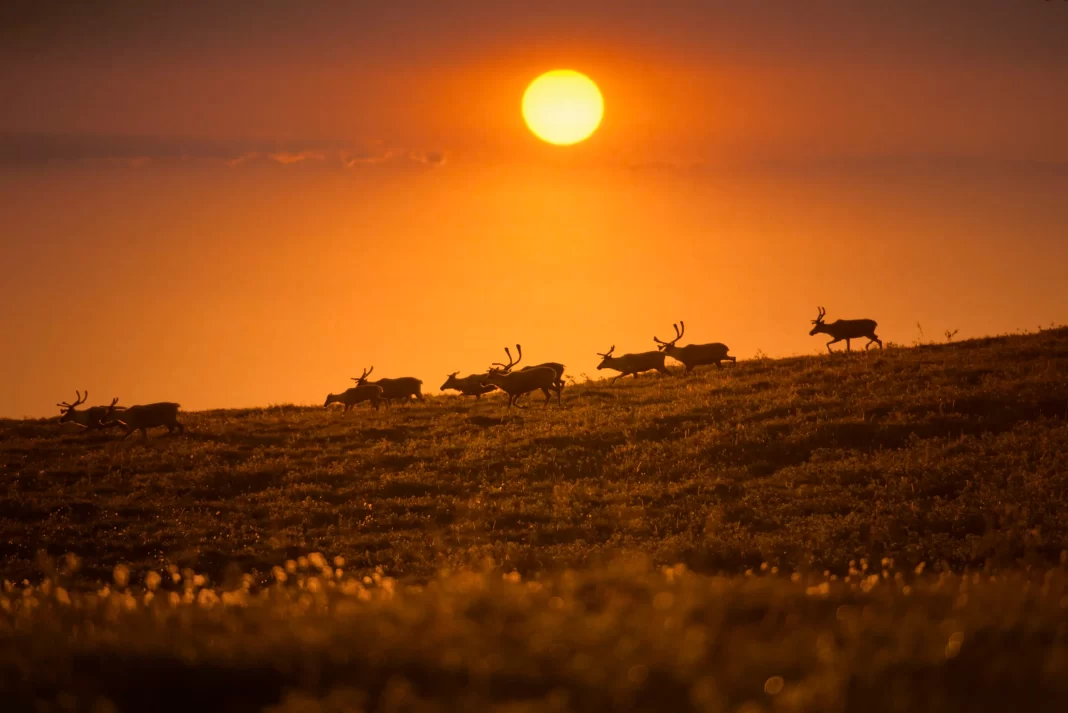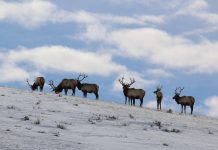In the rugged wilderness of Alaska, where stunning landscapes stretch as far as the eye can see, a desperate effort is underway to save the dwindling Mulchatna caribou herd. These majestic creatures, once numbering around 200,000, have suffered a devastating decline, leaving them off-limits to hunters due to alarmingly low population levels. But hope flickers in the hearts of Alaska wildlife officials as they embark on a predator management experiment to reverse the herd’s fortunes.
Predator Control
The Alaska Department of Fish and Game (ADFG) has intensified its predator control efforts this spring, setting its sights on brown bears, black bears, and wolves that roam the caribou calving grounds. Over a span of 17 days in May and early June, dedicated ADFG officials took decisive action, removing 94 brown bears, five black bears, and five wolves from the area. This bold move comes at the behest of the Alaska Board of Game, recognizing the cultural and subsistence significance the Mulchatna herd holds for indigenous communities and hunters in southwestern Alaska.
The state’s pressing concern is the survival of caribou calves, which holds the key to reversing the herd’s decline. By curbing predator populations on a specific section of the calving grounds, Alaska hopes to bolster calf survival rates. It’s a delicate balancing act, as wildlife managers understand that other factors, like diseases and a lack of available forage, contribute to the herd’s struggles. Nevertheless, controlling predator populations is one aspect they can directly influence.

History of Removal Efforts
ADFG has been removing wolves from the herd’s range using aerial methods since 2012, but the impact has been less than anticipated. In a bold expansion of their efforts, the agency took a groundbreaking step this year by including brown bears and black bears in their predator control strategy. The specifics of how these predators were targeted remain undisclosed, but the intent is clear: protect the vulnerable caribou calves. ADFG remains steadfast, believing that these efforts will ultimately contribute to the herd’s recovery.
While it’s important to note that predator control is just one piece of the puzzle, ADFG’s commitment is commendable. They acknowledge that a host of factors affects the Mulchatna caribou herd, but predator populations are among the few they can actively manage. By focusing their efforts on the western calving grounds, ADFG will be able to compare calf survival rates with those of the eastern calving grounds. Throughout the summer, diligent monitoring will provide valuable insights to guide future decisions.

The Concerning Decline in Population
The Mulchatna caribou herd’s decline has been stark, with numbers plummeting from approximately 200,000 to around 12,000 since the late 1990s. This represents a staggering 96% decrease, imperiling the sustainability of a huntable population. Regulations were implemented in 2020, attempting to address the declining population, but the changes had minimal impact. As a result, hunting for Mulchatna caribou has been prohibited since 2021, a measure that is likely to persist until signs of recovery emerge.
Why should we care? Beyond the intrinsic value of preserving a remarkable species, the Mulchatna caribou herd holds deep cultural significance. These amazing animals are vital to indigenous communities and sustains the livelihoods of local hunters. It’s about more than just the survival of a species—it’s about preserving traditions, heritage, and the delicate balance of ecosystems. By taking action to safeguard these caribou, we safeguard a way of life and honor the interconnection of our natural world.
Click here to read the press release given by the Alaska Department of Fish and Game. Visit our website to read more about Caribou declines in the Arctic.















